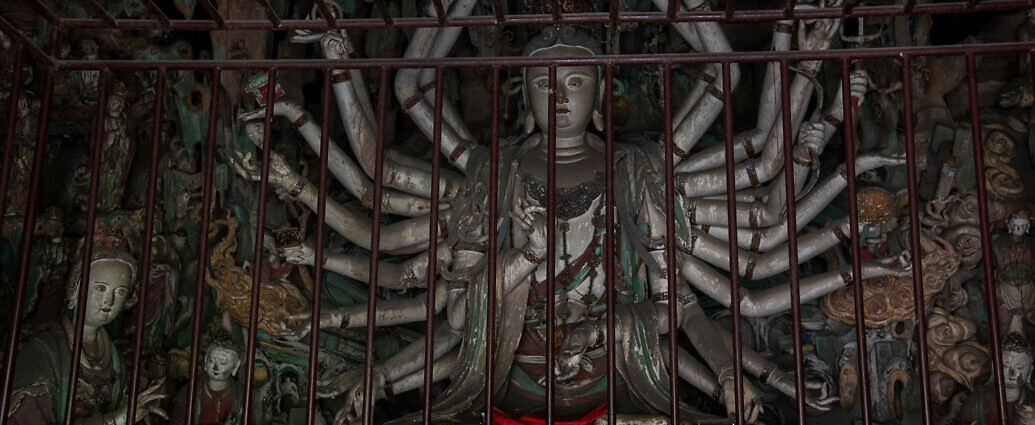Sista innan vi åkte tillbaks till Beijing var att vi åkte till Shuanglin templet i Qiaotou.
» FLER BILDER / MORE PICTURES
The Shuanglin Temple (Chinese: 双林寺; pinyin: Shuānglín Sì) is a large Buddhist temple in the Shanxi Province of China. It is situated in the countryside of Qiaotoucun about 6–7 kilometres (3.7–4.3 mi) southwest of the ancient city of Pingyao. It is among the many cultural monuments located in the Pingyao, which is a UNESCO World Heritage site inscribed in 1997. The temple is protected by the state administration.
Founded in the 6th century, the temple is notable for its collection of more than 2,000 decorated clay statues that are dated to the 12th-19th centuries. Its original name was Zongdu but it was renamed during the Northern Song Dynasty period as Shuanglin. It is nicknamed the museum of coloured sculptures. Most of them are dated to the period of the Song, Yuan, Ming and Qing
“Shuanglin Temple is originally called Zhongdu Temple. In the northern Song Dynasty, in order to memorialize Buddha who attained Nirvana under two trees in a forest, it was changed into ‘Shuanglin, ‘shuang’ meaning ‘two or double’, and ‘lin’ meaning ‘forest.’ All cultural relics inside the temple, such as the pagoda trees planted during the Tang Dynasty (618-907), stone tablets from the Song Dynasty, bells from the Ming Dynasty, colored sculptures and ancient constructions, are considered invaluable. The colored sculptures have won great acclaim in the world. Various sculptures are scattered throughout the temple, the tallest measuring over one zhang (3.3 meters) and the shortest, one chi (three chi=one meter). With a total of 2,056 sculptures, the temple is reputed as an oriental art treasury. The cream-colored art sculptures of the Yuan (1271-1368)-Ming period are compared to the Yungang Grotto and frescos in the Yongle Palace of Ruicheng City.”
[ChinaTopTrip.com]












